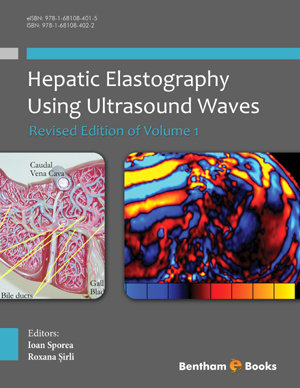Abstract
Real-Time Strain Elastography performed by the Hitachi System (HI-RTE) uses a conventional ultrasound probe to compare and analyze echo signals before and under slight compression. Initially, HI-RTE offers only qualitative results. To overcome this limitation several quantitative methods in RTE have been developed, such as Elastic Ratio, Elastic Index, Elasticity Score and Liver Fibrosis Index (LFI). Despite being the first ultrasound-based elastography technique, HI-RTE has not yet yielded the desired results in the evaluation of liver fibrosis. This lack of performance is a consequence of inconsistency between the ultrasound-systems, methods and data analysis among different research teams. In the past few years, it seems that the technique has become more standardized and the elastographic assessment parameters are already established. The overall results of a meta-analysis suggested that LFI was excellent in diagnosing F≥3 and has moderate accuracy for F≥2 and F=4. However, LFI could not be applied to accurately differentiate F2 versus F0-1 and F=4 versus F0-3. HI-RTE is readily available with the ultrasound machine, is feasible in patients with ascites and inflammation and has promising results for non-invasive liver fibrosis evaluation in patients with chronic viral hepatitis and fatty liver diseases. In the future, a large, prospective, international multicenter study is essential to obtain a further evaluation of the potential diagnostic value of HI-RTE.
Keywords: Elasticity index, Liver stiffness, Real Time Elastography.

















